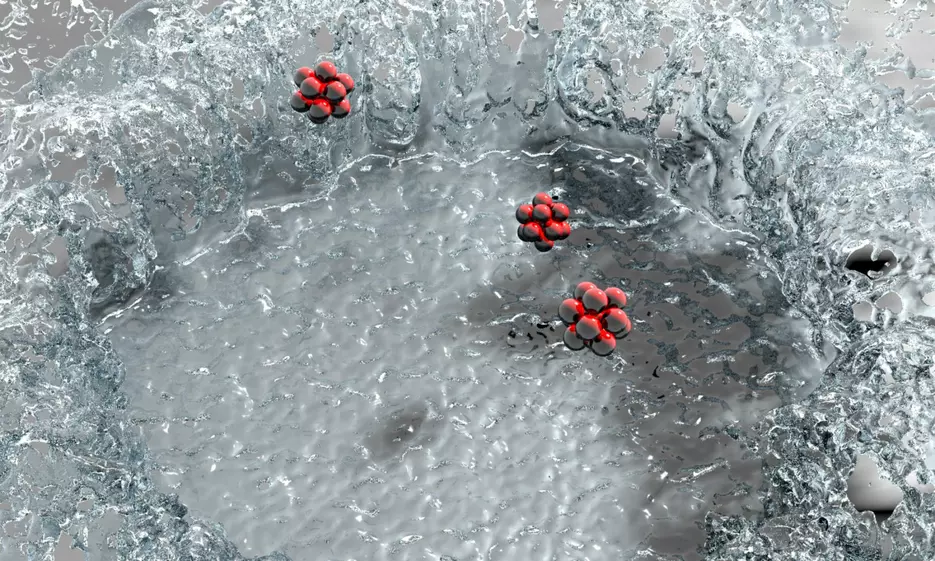Researchers from the Department of Ion Physics and Applied Physics headed by Fabio Zappa and Paul Scheier observed an astonishing phenomenon while investigating helium nanodroplets.
 Ions packed in a helium nanodroplet remain protected on impact. Image Credit: University of Innsbruck.
Ions packed in a helium nanodroplet remain protected on impact. Image Credit: University of Innsbruck.
The ultracold droplets, upon hitting a hard surface, behave similarly to drops of water. Ions with which they were doped earlier thus remain safeguarded on effect and are not neutralized.
For around 15 years, Paul Scheier’s research team from the Department of Ion Physics and Applied Physics employed helium nanodroplets to investigate ions with methods of mass spectrometry. The experts utilized a supersonic nozzle to produce small, superfluid helium nanodroplets with temperatures lesser than 1°K.
They can be efficiently doped with atoms and molecules. The particles of interest are bound to the charges of the ionized droplets, which are later analyzed in the mass spectrometer. The researchers, during their investigations, came across an intriguing phenomenon that transformed their research.
For us, this was a gamechanger. Everything at our lab is now done with this newly discovered method.
Fabio Zappa, Department of Ion Physics and Applied Physics, University of Innsbruck
Fabio Zappa is from the nano-bio-physics team. The study has been published in the Physical Review Letters journal.
A Surprising Phenomenon
When fired at a metal plate, charged particles are generally neutralized by the numerous free electrons on the metal surface and hence can no longer be analyzed in the mass spectrometer. However, when the ions are filled in a helium nanodroplet, they are protected from the impact and fly off in all directions with a lesser number of weakly bound helium atoms.
The ions are apparently protected by the helium. But there is some evidence that the helium loses its superfluid property before impact and then behaves like a liquid, splashing away from the surface and only then partially evaporates.
Fabio Zappa, Department of Ion Physics and Applied Physics, University of Innsbruck
This might also be because the evaporation of the first droplets at the surface creates a layer of gas that delays subsequent droplets and thus safeguards them from evaporation.
Further investigations are required to comprehend if one of these explanations is correct or if there are other reasons. This method also works well with negative ions, which are generally fragile.
Nanotechnology Benefits
Paul Scheier’s group enhanced their measurement methods with this discovery and also offered significant insights for other research teams, for instance, dealing with the deposition of nanoparticles on surfaces.
Metal nanoparticles are a great example of this. In many modern technologies, metal nanoparticles are found that have very specific properties.
Paul Scheier, Department of Ion Physics and Applied Physics, University of Innsbruck
The development of such nanofilms can mostly be ineffective, which could also be associated with the recently discovered phenomenon in Innsbruck.
The work was supported financially, among others, by the Austrian Science Fund FWF and the province of Tyrol within the framework of a K-Regio project.
Journal Reference:
Martini, P., et al. (2021) Splashing of Large Helium Nanodroplets upon Surface Collisions. Physical Review Letters. doi.org/10.1103/PhysRevLett.127.263401.